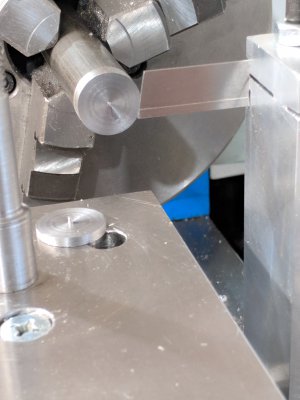- Joined
- Oct 16, 2019
- Messages
- 29
I have a PM1127 lathe and I'm looking to buy a parting blade for my parting tool holder. I'm looking to get the "T" shaped parting blades, and the ones with cobalt mixed in.
I'm trying to decide which thickness I should go with. 1/8, 3/32 or some other thickness? I think I remember seeing a Tubalcain video where he recommended not to get the 1/8, and to get the 3/32 instead or was it the other way around?
Also, another unrelated question:
How much diameter should I be turning on my lathe at max? I've been weary of doing more than .050 as I'm not sure how thick of a cut my lathe can handle and I don't want to break anything.
I'm trying to decide which thickness I should go with. 1/8, 3/32 or some other thickness? I think I remember seeing a Tubalcain video where he recommended not to get the 1/8, and to get the 3/32 instead or was it the other way around?
Also, another unrelated question:
How much diameter should I be turning on my lathe at max? I've been weary of doing more than .050 as I'm not sure how thick of a cut my lathe can handle and I don't want to break anything.



